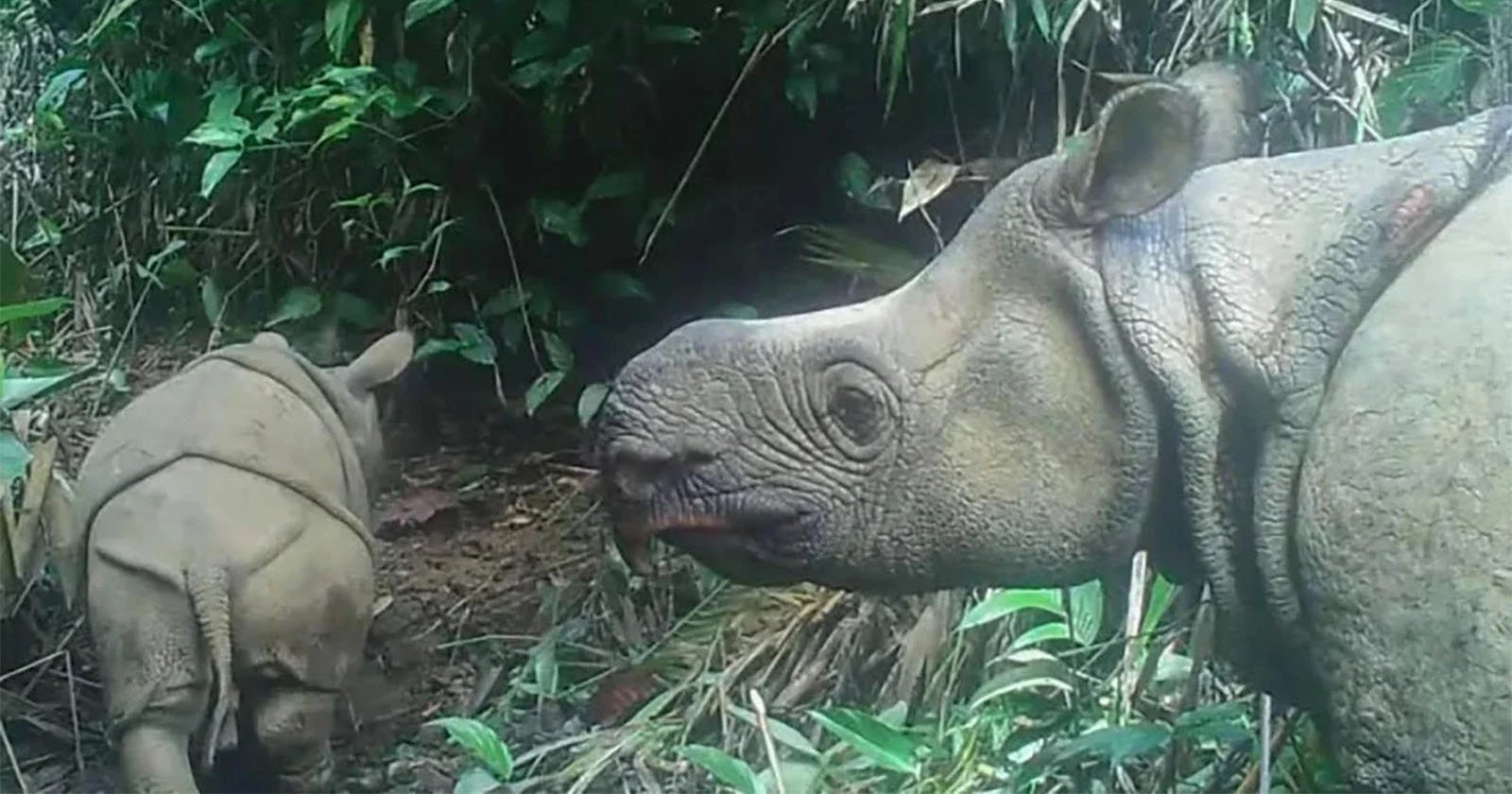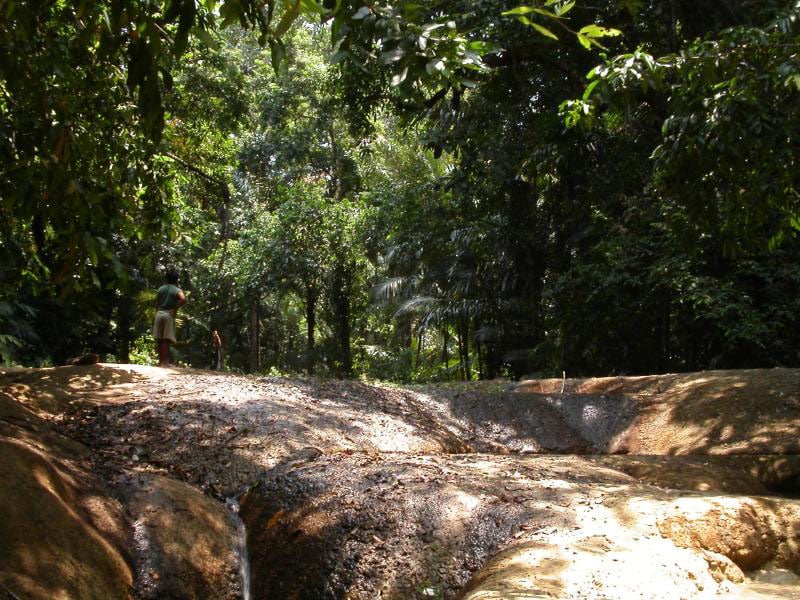Camera traps are instrumental for wildlife biologists and conservationists to monitor the health of animal populations. In some cases, camera traps even spot species that are seldom seen by people. In Java, Indonesia, a camera trap spied an adult Javan rhinoceros (Rhinoceros sondaicus) and her newborn calf — a remarkably rare sighting of the critically endangered species.
The photo was captured in Ujung Kulon National Park on Java Island by one of the park’s 126 camera traps. The footage below, spotted on Facebook by DIY Photography, was captured late in the morning of March 4, 2024, and first shared about a month later.
“Praise God, this is good news and proves that Javan rhinos, which only exist in Ujung Kulon, can breed properly,” Satyawan Pudyatmoko, a senior environment ministry official, said in a statement.
Per Phys.org, experts believe that only 82 wild rhinos are living in the 120,000-hectare park. Other estimates put the number lower, somewhere in the 70s. As Pudyatmoko said, Ujung Kulon is the only place on Earth where wild Javan rhinos live.
The Javan rhino once numbered in the thousands and had a range throughout southeast Asia, including beyond the islands of Indonesia. However, due primarily to poaching, the species has been thoroughly decimated and is among the rarest living animals on Earth.

Unlike some other critically endangered species, the Javan rhino has thus far not been kept successfully in captivity, limiting the possibility of a controlled breeding program. The Javan rhinoceros population in Vietnam’s Cat Tien National Park was declared extinct in 2011, rendering Ujung Kulon the last bastion of the great ungulate.

Thanks to improving camera technology, experts in Java can safely keep an eye on the rhinos and their habitat, ensuring that the animals can live with as little human interference as possible.
As always, biologists are excited to see a new baby. However, there is ongoing concern that the Javan rhino population is so small that it will reach a genetic bottleneck due to inbreeding. This new calf looks healthy and will hopefully stay that way.
Best of luck, little rhino.
